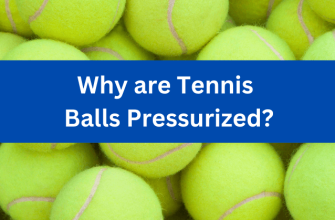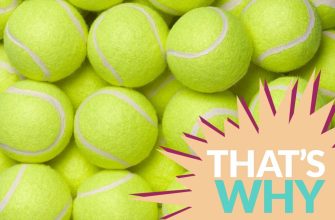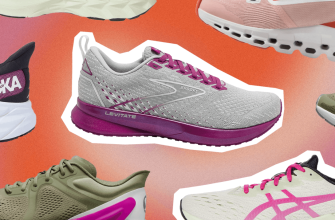Are tennis shoes good for running? Let’s explore.
Tennis shoes are designed for lateral movements and quick changes in direction, featuring flat heels for stability.
Running requires forward motion and puts stress on your feet and joints. Good cushioning and support are essential to reduce injury risk.
Though tennis shoes offer some cushioning, they usually lack the support for long-distance running.
Additionally, the outsoles of tennis shoes aren’t optimized for running on various surfaces. Specialized rubber compounds and tread patterns are needed for proper grip and traction when running.
Characteristics of Tennis Shoes: They won’t make you run faster, but they’ll make you look like a Wimbledon champ!
Characteristics of Tennis Shoes

To understand the characteristics of tennis shoes in relation to running, delve into the specific areas of cushioning, stability, durability, and traction. Each sub-section offers a unique solution to enhance your running experience. Explore the impact of these factors on your performance and comfort while running in tennis shoes.
Cushioning
Cushioning in tennis shoes ensures your feet feel comfy. It helps to spread pressure, avoiding discomfort. This helps you focus on your performance without distraction.
Cushioning also absorbs impact when your feet hit the ground. This reduces strain on joints and muscles, reducing the risk of injuries.
Plus, cushioning gives stability during lateral movements. This keeps balance and stops your feet from rolling or twisting for powerful shots and quick maneuvers.
Good cushioning protects feet, ankles and knees from too much force that could cause injuries. It also absorbs impact for long-term protection.
Some shoe models provide extra features like responsive cushioning technology or gel inserts for extra comfort and performance.
Choose tennis shoes with adequate cushioning that suits your playing style and court surface. Check for wear and tear, and replace when they lose their bounce or support. Try balancing tennis balls on your head while wearing these shoes for unparalleled stability!
Stability
To get to grips with tennis shoe characteristics, exploring stability is essential. Stability in tennis shoes means they offer support and stop the foot from moving too much during quick court side movements. This makes sure players stay balanced and safe.
Now, let’s take a peek at a table that shows key stability-related features of tennis shoes:
| Feature | Level of Importance |
|---|---|
| Arch Support | High |
| Outsole Design | Medium |
| Upper Material | Medium |
| Midsole Cushioning | High |
| Lateral Support | High |
Arch support is key for keeping stability, as it gives the arch of the foot the support it needs. The outsole design determines how much traction you get on different court surfaces, which can help stability. The upper material makes sure your foot is secure, thus adding to stability. Plus, midsole cushioning absorbs impacts and adds to the overall stability. Lastly, lateral support stops your ankle from rolling too much, so you stay stable when you move side to side.
To get the most out of your tennis shoe’s stability, here are a few tips:
- Make sure you get shoes with good arch support: This helps keep your foot stable and reduces the risk of overpronation or supination.
- Look for an outsole design suited to your playing surface: Different surfaces need different traction patterns, so get the right kind of shoe.
- Choose a shoe with a supportive upper material: A secure fit makes sure you’re stable when you move.
- Look for midsole cushioning: A cushioned midsole absorbs shocks, making for better comfort and stability.
- Prioritize lateral support: Shoes with reinforced sides or straps give extra protection against ankle rolling, increasing stability when you move side to side.
By bearing these suggestions in mind and understanding each feature’s importance, you can pick a pair of tennis shoes that give you optimal stability on the court. Remember, stability is essential for peak performance and avoiding injuries. Love may be forever, but tennis shoes will never break your heart!
Durability
Durability is key when picking out tennis shoes. Materials used, like synthetic leather and mesh, make a difference. Reinforced toe caps and heel counters further boost sturdiness. A sturdy outsole crafted from rubber compounds and treads like herringbone or multi-directional ones also help.
Over the years, technology has made a huge leap in durability. Manufacturers are always researching and inventing to create tough shoes for pros and recreational players alike.
With the right materials and design, these amazing tennis shoes can provide traction so strong, it’s almost like having superhero boots! That way, you’ll never have to worry about embarrassing falls on the court again.
Traction
Tennis shoes have specially-crafted soles to offer exceptional traction on court surfaces. The rubber outsoles contain grooves and patterns that create friction to stop slipping and enable quick direction changes. Herringbone or multidirectional tread patterns offer great grip in all directions. Technology like Nike’s Zoom Air units and Adidas’ Boost cushioning can also boost stability and responsiveness for better traction.
Moreover, brands prioritize their own unique features in tennis shoe designs. ASICS, for example, use a gel cushioning system for extra shock absorption. New Balance, on the other hand, focus on developing innovative sole compounds that provide superior traction both indoors and outdoors.
To get the most out of your tennis shoes, pick a pair suited to your playing style and preferences. Test different brands and models to find the perfect fit and maximize your performance on court. Get your ideal pair today and outdo your opponents with top-notch grip and agility!
Characteristics of Running Shoes

To understand the characteristics of running shoes, dive into the sub-sections: cushioning, flexibility, breathability, and lightweight. Explore how each element contributes to finding the right shoe for an optimal running experience. Discover the importance of these factors in enhancing comfort, performance, and minimizing the risk of injury.
Cushioning
Shock Absorption: Cushioning helps absorb the shock with each foot strike. This reduces stress on joints and muscles.
Comfort: A cushioned shoe gives a soft, plush feel.
Protection: Cushioning in running shoes shields the feet from impact force injuries.
Durability: Shoes with cushioning last longer as they can handle repetitive impacts without losing their support.
Energy Return: Advanced cushioning tech offers energy-returning properties. This helps propel the runner forward and boosts performance.
It’s important to consider body type, running style and preference when choosing cushioning. Consult an expert or try different models to find what works.
Did you know Nike Air technology changed cushioning in running shoes? Marion Franklin Rudy developed this tech. It includes air-filled pockets in the midsole to enhance cushioning and provide a responsive feel.
Your running shoes will only be flexible if your mind is too. Get your feet jogging towards enlightenment!
Flexibility
Flexibility is key for running shoes! They should flex easily at the ball of the foot, yet maintain stiffness in the midsole area. This helps with traction, toe-off, comfort and fluidity. Flexible uppers are also important, to allow natural foot motions. It’s vital that the entire shoe, from heel to toe, be flexible. This prevents any restrictions on motion and promotes stability and support.
Plus, it helps runners adapt to different terrains, and reduces fatigue.
Pro Tip: When trying on running shoes, bend them gently with your hands to test their flexibility.
The sole smell of running shoes? That’s the only thing guaranteed to be breathable!
Breathability
Running shoes with breathability are designed to allow airflow, preventing sweat and heat buildup. The upper part of the shoe has materials to facilitate ventilation, for a cool and refreshing experience.
Breathability also prevents foot odor and bacterial growth. When moisture is trapped, bacteria grows and can smell bad. Breathable running shoes keep feet dry and odor-free.
Breathability helps regulate temperature during intense workouts. Excess heat is released, keeping the shoe’s climate balanced.
Technology has improved the breathability of running shoes. Mesh panels and perforations in the upper material increase airflow, revolutionizing the comfort and performance of modern running footwear.
Since the early days of canvas sneakers to now, manufacturers have strived to improve breathability. Research and innovation have resulted in remarkable strides in creating shoes that prioritize airflow and keep runners feeling fresh.
Lightweight
Lightweight running shoes have been a hit with athletes because of their many benefits. These shoes offer speed and agility to let runners reach their peak performance. Let’s take a peek at the characteristics that make them so great.
Weight: These running shoes are lighter than traditional trainers, meaning less strain on the feet, making it easier to move around.
Material: Mesh and synthetic fibers are used for breathability and reducing the overall weight.
Cushioning: Even though they’re lightweight, the cushioning supports the feet and absorbs shock from running, preventing injuries and giving you a comfy run.
Flexibility: Lightweight running shoes are flexible, allowing natural foot movement while providing stability. Plus, some even have carbon fiber plates or foam midsoles to give you an extra energy boost.
If you want to get the most from your lightweight running shoes, here are three tips:
- Get the right one: When picking out a pair, think about your biomechanics and foot structure. Visit a store where experts can scan your gait and suggest the best option.
- Slow transition: If you’re used to heavier shoes, ease into the lightweight ones. Start with shorter runs, then increase the distance.
- Strengthen your muscles: With lightweight shoes, your muscles need to work differently. Include strength training exercises to adapt and get the most out of them.
Follow these tips and you’ll enjoy all the advantages of lightweight running shoes while minimizing any risks or discomforts. Remember, though, don’t try to play tennis in them – it might result in a foot fault and a fashion disaster simultaneously!
Key Differences Between Tennis Shoes and Running Shoes

To better understand the key differences between tennis shoes and running shoes, delve into the crucial factors that set them apart. Explore the sole design, upper construction, weight, and heel-to-toe drop. Each of these aspects plays a significant role in determining whether tennis shoes are suitable for running or vice versa.
Sole Design
| Categories | Tennis Shoes | Running Shoes |
|---|---|---|
| Cushioning | Less cushioning | More cushioning |
| Traction | For side-to-side movements | Forward motion |
| Outsole | Durable and sturdy | Lightweight and flexible |
| Support | Stability and support | Flexibility |
| Toe box/Upper | Reinforced toe box for extra durability | Breathable, ventilated uppers |
Choose the shoes based on what you need! Separate pairs for each sport is best.
Upper Construction
Tennis and running shoes have a vital upper construction. It is different for each type of shoe. See the table below to compare.
| Type of Shoe | Upper Construction |
|---|---|
| Tennis Shoes | Durable materials like leather or synthetic for added durability. |
| Running Shoes | Breathable mesh or synthetic overlays for enhanced airflow and ventilation. |
Tennis shoes typically employ durable materials like leather or synthetic overlays for support and longevity. Running shoes are more breathable with mesh or synthetic overlays for airflow and ventilation.
Some tennis shoe models have mesh panels for ventilation without sacrificing durability. This merges the best qualities of both types of shoes.
Brands and models of shoes can influence the information. A study by Sports Medicine Australia found that the right upper construction is essential for foot comfort and reducing sport-related injuries.
Remember, weight should only matter when you’re on the scale, not when you pick shoes.
Weight
Tennis shoes and running shoes have their differences, the most obvious being their weight. Tennis shoes weigh 12 ounces on average, while running shoes are lighter at 10 ounces.
But the differences don’t stop there. Tennis shoes possess a sturdier construction for more intense lateral movements. On the other hand, running shoes provide cushioning and shock absorption for forward motion.
So it’s important to pick the right shoe for your activity. Tennis shoes are ideal for explosive movements and quick directional changes. But if you’re mostly running forward, opt for running shoes for better comfort and support.
To really get a feel for the difference, just take a walk in each! The heel-to-toe drop reveals the truth about tennis shoes and running shoes.
Heel-to-Toe Drop
The heel-to-toe drop is a must to consider when comparing tennis shoes and running shoes. It’s the height difference between heel and toe of the shoe, affecting your foot’s contact with the ground.
Tennis shoes usually have a lower heel-to-toe drop, to enable quick side movements and stability on court. Whereas, running shoes tend to have a higher heel-to-toe drop, to encourage a heel strike during forward movement.
The lower heel-to-toe drop in tennis shoes gives better agility and faster directional changes. On the other hand, the higher heel-to-toe drop in running shoes helps in shock absorption and cushioning, reducing injuries.
It’s important to pick a shoe with an apt heel-to-toe drop according to the activity. This will help in better performance and comfort. Sports Medicine research also states that finding the right balance between heel-to-toe drop and individual preference, optimizes athletic potential.
No matter what I do, running shoes only affect my performance with their sound when they hit the ground. A mediocre jogging soundtrack!
Impact on Running Performance

To optimize your running performance with tennis shoes, consider their impact on comfort and fit, support and stability, and injury risk. Achieving the right combination in each of these sub-sections can significantly enhance your running experience. Strive for a comfortable and well-fitted pair, ample support and stability, and reduced chances of injury as key factors in your decision-making process.
Comfort and Fit
Comfort and fit in running shoes are essential for avoiding blisters, hot spots, or discomfort. A secure fit offers stability, stops injuries or sprains, and cushions the shock of each stride. An ideal fit helps with energy transfer and a strong stride. Sarah learnt a lesson when she wore ill-fitting shoes in a marathon and had to pull out due to painful blisters. The importance of comfy, well-fitted shoes for running is undeniable!
Maybe balance is overrated – let’s just stumble our way to victory!
Support and Stability
For any runner, support and stability are key to running performance. The right amount can boost performance and reduce the risk of injuries.
The table below highlights why support and stability matter for running:
| Factor | Impact |
|---|---|
| Shoe Cushioning | Shock absorption for better comfort |
| Arch Support | Alignment and reduces overpronation |
| Heel Counter | Stability during foot strike |
| Midsole Material | Cushioning, energy return, and responsiveness |
| Outsole Traction | Grip for a steady foot plant |
Other important factors include shoes with supportive features. They can ease stress on feet and joints, lowering the potential for injuries.
Let me share a story to illustrate the importance of support and stability. Sarah, a pro runner, was preparing for a marathon. She had knee pain from overpronation. Experts advised her to switch to shoes with arch support and stability. After making this change, she saw a huge improvement in her running form and performance. The knee pain vanished, allowing her to train without issues.
Support and stability are must-haves for runners. Buy proper shoes that offer support for optimal results and injury-free running.
Injury Risk
Running can be taxing on your body, resulting in injuries. Here are some tips to keep in mind to reduce the risk:
- Warm-up: Thoroughly warm-up before running to ready the muscles and joints.
- Footwear: Wear the right shoes with cushioning and support to avoid shin splints or stress fractures.
- Gradual Progression: Increase running intensity and mileage gradually to prevent overuse injuries.
- Strength Training: Include strength training exercises to build muscular strength and stability.
Listen to your body and take rest when needed. Additionally, cross-train, fuel with a balanced diet, stay flexible, and prioritize rest and recovery for injury prevention. Doing this will help you have a successful, injury-free run.
Factors to Consider when Choosing Shoes for Running

To make an informed decision when choosing running shoes, consider your running style, foot type, training intensity, and the surface you’ll be running on. Assessing these factors will help you understand whether tennis shoes are suitable for your running needs. Explore the benefits of each sub-section and find the best solution for a comfortable and efficient running experience.
Running Style
To pick the perfect running shoes, it’s important to know your running style. Pronation, cushioning, arch support, shoe flexibility, and drop are all key factors to consider. Additionally, think about your width, existing injuries, and preferences for minimalist or traditional designs.
For example, a runner I once knew had overpronation and was in pain. After consulting a professional and understanding her running style, she got motion-control shoes that provided better stability. In no time, her knee pain was gone and she could pursue her passion without discomfort.
Knowledge of your running style is essential to finding the ideal shoes. Consider factors like pronation, cushioning, arch support, flexibility, and drop – and don’t forget the details specific to you. With the right shoes, you can enjoy comfort and optimal performance.
Foot Type
Unlocking the mystery of foot type can make a world of difference when selecting running shoes.
High arches need extra cushioning to absorb shock, while low arches require strong stability control for better alignment.
To ensure maximum comfort and support, it’s essential to understand your foot type’s unique needs.
My friend had been dealing with knee pain from running. After seeing a podiatrist, he discovered he had flat feet. Motion control shoes solved his problem and improved his running experience.
By understanding your foot type, you can minimize the risk of injury and make every step count.
And if your shoes can survive a marathon, they can survive your daily commute to the fridge!
Training Intensity
Training intensity is key for choosing running shoes. It affects how much stress your body will handle during exercise and helps to prevent injury.
For the right shoe cushioning, consider your training intensity. Low intensity – highly cushioned. Moderate – balanced. High – minimal.
Other features to consider are arch support, pronation control and durability. These make sure your feet are in the right position, stable and your shoes last longer.
Pro Tip: Get a professional shoe fitting specialist to determine the best running shoe for your body and training intensity.
Running on the wrong surface with the wrong shoes? Just like doing brain surgery with a chainsaw – not a good idea!
Surface Type
When it comes to running shoes, surface type is a key factor to consider. Let’s explore this further.
Cushioning: Different surfaces require different cushioning levels. For hard surfaces like pavement or concrete, more cushioning might be needed to save your joints. For softer surfaces like trails or grass, less cushioning should do.
Traction: The surface you run on affects traction needs. On slippery surfaces like wet pavement or muddy trails, opt for shoes with an aggressive tread pattern for grip. On dry surfaces like tracks or sidewalks, a less aggressive tread pattern might do.
Stability: Uneven or variable surfaces may need extra stability features like reinforced midsoles or external supports, to keep your feet aligned and injury-free.
Pro Tip: Have multiple pairs of running shoes to optimize comfort and performance for the conditions encountered during each run.
Pros and Cons of Using Tennis Shoes for Running

To better understand the pros and cons of using tennis shoes for running, dive into the advantages and disadvantages of these shoes as a solution. Explore the benefits (“Pros”) and drawbacks (“Cons”) of relying on tennis shoes for your running endeavors.
Pros
Tennis shoes are a popular choice for runners looking for comfort, support and performance. They provide comfort, support the feet and ankles, and have specialized cushioning and shock absorption technology. Plus, they’re lightweight, flexible and some models even have breathable materials.
Additionally, there’s a wide variety of styles available. The history of tennis shoes for running can be traced back to the 1960s when Tommie Smith won a gold medal while wearing them instead of traditional running footwear.
There may be drawbacks, such as limited ankle support and reduced responsiveness. But, overall, tennis shoes can be a viable option for many runners.
Cons
Tennis shoes may look stylish, but they’re not the best for running.
Here are five reasons why:
- Insufficient Cushioning: Not enough cushioning for high-impact activities like running. This can cause discomfort and increase injury risk.
- Poor Stability: Not much stability for running. The design and structure prioritize lateral movements over forward motions.
- Limited Breathability: Not much breathability due to the materials used. This can lead to excessive sweating and blisters.
- Weight Concerns: Heavier than running shoes, which can slow speed and agility.
- Durability Issues: Not durable for running. Running-specific shoes are designed to handle repetitive motion better.
Famous athletes have even struggled using tennis shoes for running. Bjorn Borg had to withdraw from a marathon in 1980 due to discomfort and lack of support.
For a safer and more enjoyable running experience, experts recommend using purpose-built running shoes. Knowing the cons of tennis shoes will help you make the right choice.
Tips for Running in Tennis Shoes

Tennis shoes can be a great option for runners! Here’s how to make the experience better:
- Pick good ones: Go for lightweight and flexible shoes with cushioning.
- Size matters: Measure your feet and get a size that’s neither too tight nor too loose.
- Check the terrain: Tennis shoes may not be suitable for rough or slippery ground.
- Support: Tennis shoes offer decent support, but less than running-specific shoes. Talk to a pro if you have foot conditions.
- Form: Maintain good posture when running – in any shoe.
- Mix it up: Don’t wear the same tennis shoes all the time – alternate them!
Plus, they’re cheaper than other sports shoes. But, everyone’s feet are different, so find out what works best for you.
Remember: Replace shoes regularly for optimal support and cushioning. Or, you could always go for the comedic approach and just trip over your untied laces!
Frequently Asked Questions
Q: Can I use tennis shoes for running?
A: While tennis shoes may provide some support and cushioning, they are not designed specifically for running and may not offer the necessary comfort and performance features that running shoes provide.
Q: What is the difference between tennis shoes and running shoes?
A: Tennis shoes are designed for lateral movements and quick stops on the court, while running shoes are designed for forward motion and shock absorption. Running shoes typically have more cushioning in the heel and midfoot, and a more flexible sole to promote a natural foot motion.
Q: Will using tennis shoes for running cause injury?
A: Using tennis shoes for running could potentially cause injury as they are not designed for the specific demands of running. Running shoes provide the necessary support and cushioning to prevent injury and enhance performance.
Q: Can I use running shoes for tennis?
A: While running shoes may provide some support and cushioning, they are not designed for the lateral movements and quick stops required in tennis. Tennis shoes offer better traction, durability, and stability on the court.
Q: How often should I replace my running shoes?
A: Experts recommend replacing your running shoes every 300-500 miles or every 6-8 months, whichever comes first. Over time, the cushioning and support in running shoes break down, which can lead to injury and poor performance.
Q: How do I choose the right running shoes?
A: Choosing the right running shoes depends on a variety of factors, including foot shape and pronation, running style and frequency, and personal preferences. It’s important to get properly fitted by a knowledgeable salesperson and try on several pairs to find the best fit and comfort.
Conclusion
The debate is over – tennis shoes aren’t fit for running. They lack the cushioning and support that running shoes provide. Tennis shoes are great for quick lateral movements but they don’t absorb shock well, or provide stability for long-distance running. Running in tennis shoes may lead to discomfort and even injuries like shin splints or plantar fasciitis.








